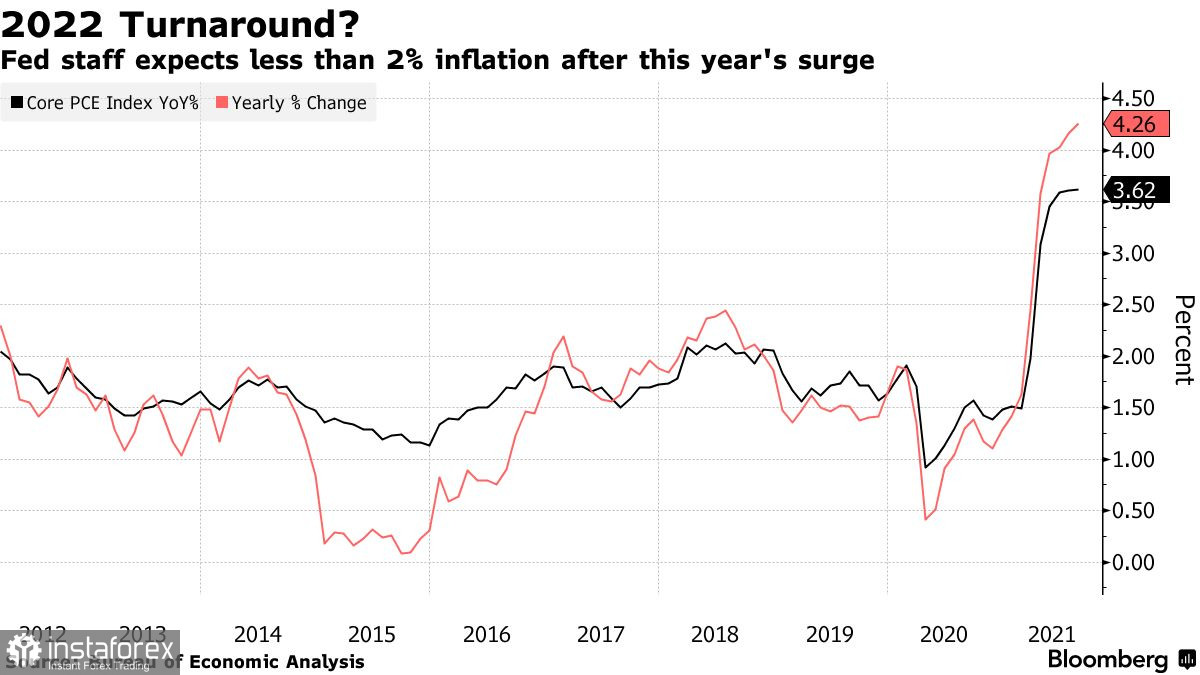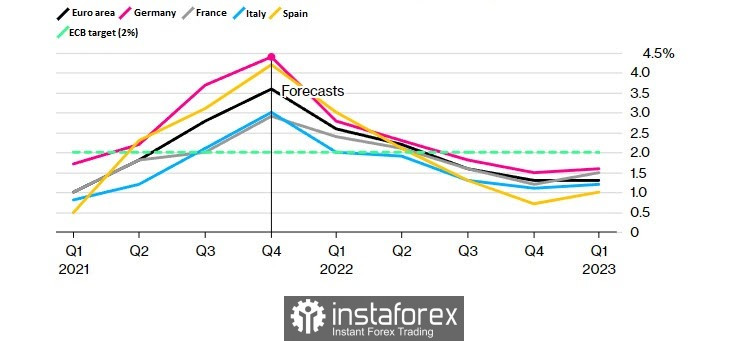Euro traded above the 16th figure on Monday, thanks to the statements of ECB members and weak data on US output.
Ignazio Visco, governor of the Bank of Italy, said he believes that the ECB should maintain its flexibility on post-crisis stimulus measures, and one of the most effective ways for it is to buy debt securities issued by EU countries. "I think flexibility should remain," he said. "We certainly have to discuss how to adjust our purchase programs as it will help against unexpected shocks, and it will help to avoid fragmentation that may rise again."
Visco believes that ending economic support could lead to unexpected shocks and fragmentation of certain sectors.

Debates over the ECB's programs have increased recently, especially after CPI in the Euro area surged by 3.4% over the past year. Since this is above the central bank's target of 2%, difficult decisions must be made to stabilize the situation.
Nevertheless, many politicians remain calm, perceiving the increase in inflation as temporary. ECB President Christine Lagarde, for instance, has repeatedly said that high inflation is unlikely to last long. But there are some that believe pressure could intensify as wages rise and the economy recovers.
Going back, Visco also opposed a rate hike, contrary to investors who now expect the central bank to raise its negative deposit rate as early as September 2022.
And Bank of France Governor Francois Villeroy de Galhau, like Visco, suggested that the ECB maintain its flexibility in its bond purchase program.

The situation is roughly the same in the Federal Reserve, where an army of experts are trying to figure out the right approach to monetary policy. Some officials have publicly voiced concerns about rising prices, but most analysts and Fed officials remain confident that inflation will return below 2% in 2022. This was stated in the minutes of the Fed meeting last month. However, uncertainty over price pressures persist amid the COVID-19 pandemic and supply chain problems.
Many believe that consumer price increases driven by supply-side problems will partially halt when the supply chain stabilizes. They also expect import prices to drop sharply.
As such, Fed officials agreed that they should start reducing bond purchases, but no exact timing was given. Most likely, it will depend on how GDP grows in the coming months. The approximate dates are mid-November or mid-December this year.
Talking about macro statistics, the US Fed reported that industrial production in the country fell 1.3% in September, after a revised 0.1% drop in August. This surprised analysts because they expected the figure to rise by 0.2%.
The data said production of cars and parts dropped by 7.2% amid a shortage in semiconductors. Meanwhile, production of utilities fell by 3.6%. It was the difficulties with logistics that set off a shortage in materials.
The Fed also said capacity utilization fell to 75.2% in September.

On the bright side, home demand and sales remain strong, according to the National Association of Realtors. The index reportedly increased to 80 points in October, from 76 points in September. But construction workers continue to experience supply chain disruptions and labor shortages.
Today, the US Department of Commerce will release a report on the number of new housing starts in September, and it is expected to show an increase from 1.615 million to 1.620 million. Meanwhile, the number of building permits is projected to fall to 1.680 million.
Technical analysis for EUR/USD
A lot currently depends on 1.1625 because climbing above it will allow EUR/USD to reach 1.1645 and 1.1660. Meanwhile, a fall below the level could lead to a further drop to 1.1620, and then to 1.1590 and 1.1570.





















